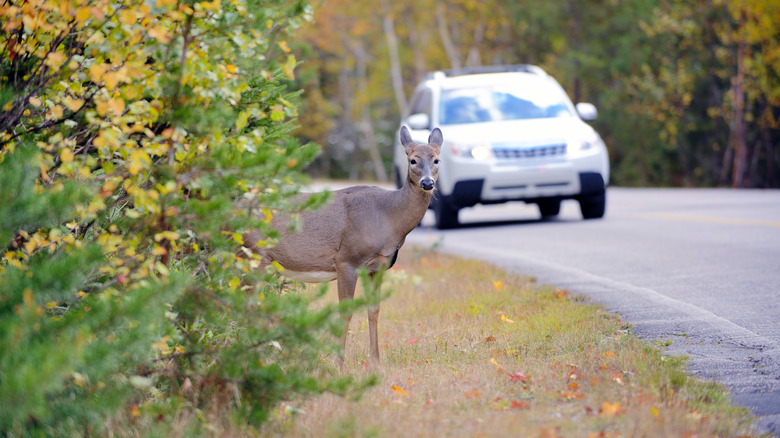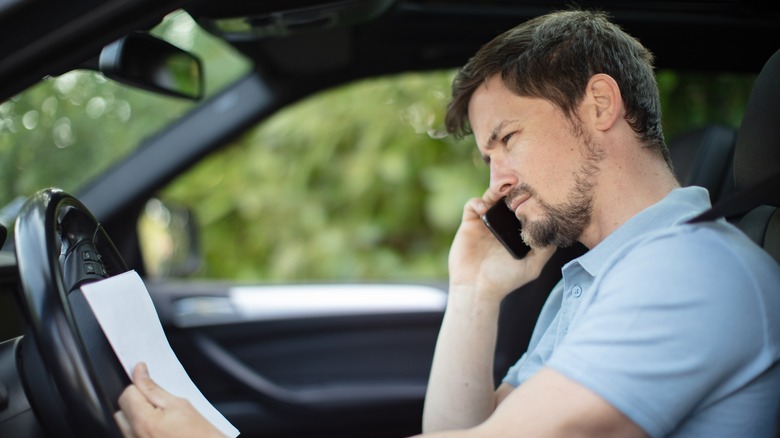Should You Help An Injured Deer After Hitting It With Your Vehicle?
We may receive a commission on purchases made from links.
Deer are responsible for the most animal-related accidents, injuries, and deaths in the United States each year. The vast majority of these incidents involve deer being hit by vehicles. According to CNN, there are an estimated 2.1 million vehicular accidents with deer annually. Perhaps this shouldn't be much of a surprise as both the human population and population of deer is continuing to rise. Today, there are around 25 million deer in the United States, leading to very dense populations in some areas. Given these areas are crisscrossed with roads, it is almost inevitable there will be accidents. Once an accident occurs, many drivers are left to wonder if they should help an injured deer after hitting it with their vehicle.
In short, the answer is no. There are a variety of reasons for this. Primarily, you should refrain from helping an injured deer you've hit with your vehicle because your safety, along with that of your vehicle and any passengers, should be your primary concern. Secondly, approaching an injured animal is one of the main reasons people are attacked by deer. So, while your instincts may be to help a deer involved in an accident, there are other steps you should take for the safety of both you and the animal.
What to do if you hit a deer with your vehicle
If you are unfortunate enough to hit a deer with your vehicle, there are a few steps you should take to protect yourself, your car, and any passengers you have in the vehicle. First, check yourself and others for injuries. If your vehicle can be moved, pull over onto the shoulder or other nearby safe area and turn on your hazard lights. It is best to stay in your vehicle. However, if it is unsafe to do so because of leaking fluids or other hazards, be sure to avoid traffic as you make your way to a safe area.
The next step is to call 9-1-1. At that point, if you or anyone else is in need of first aid, utilize your emergency supply kit or items from your car survival kit to render aid until emergency responders arrive. If you don't already carry one in your vehicle, buying a kit, such as the First Secure Emergency Roadside Kit, is a worthwhile investment. Keep in mind, it is imperative to call 9-1-1 before or while rendering aid so emergency crews can be on their way as soon as possible.
Once the situation has been stabilized and emergency responders have arrived, be sure to document any damage to your vehicle. However, as tempting as it may be, do not try to drive the vehicle if it is damaged. There may be underlying issues that would put at risk of breaking down or having another accident further down the road. Instead, have the vehicle towed to a reliable mechanic's shop and report the accident to your insurance company.

